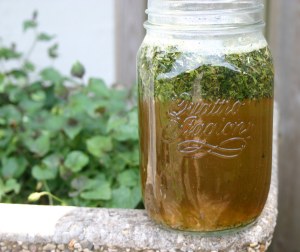It’s that time of year again, when the ghost of Christmas present hands Ebenezer Scrooge ‘the milk of human kindness’ from a large chalice. While called milk, its toxicating effects are more like that of wine and it turns out that we all may be drinking from a big glass! In a newly published study, University of Cambridge researchers reported that wine glass capacity increased almost seven times, from 66 mL (2.25 fluid ounces) in the 1700s to 449 mL (16 fluid ounces) in 2017.
THE EXPANDING GLASS
Increases in wine glass size over time may reflect changes in several factors including price, technology, societal wealth, and wine appreciation. In the 20th century, wine glasses started to be tailored in shape and size for different wine varieties, with larger glasses becoming important in wine tasting. Another consideration is that larger wine glasses can increase the pleasure from drinking wine, which may in turn increase the desire to drink more, which may in turn encourage bars and restaurants to use the larger vessels as a sales strategy. Indeed, researchers found that serving wine (usually a 175 mL measure) in larger wine glasses increased sales by almost 10% when compared with smaller glasses, an effect that was also replicated in one of two additional bars studied.
PORTION DISTORTION
The size of your wine glass might not matter so much except for the fact that there may be a correlation between glass size and wine consumption. Indeed, the researchers noted that wine glass capacity has increased most steeply over the past two decades, along with wine consumption. In the episode ‘Nourishing Healthy Attitudes about Food’ on SacredExploration, my guests and I discussed the fact that people will eat a serving of most anything when presented with it. That is, if you give someone a muffin, they will eat the muffin. If you give them a cookie, they will eat the cookie. This is referred to as “the unit bias heuristic,” in which people consume in units. The problem is… today’s muffin tends to be three times the size it used to be. Same goes for a cookie. And a soda. And so on. Super-sizing food items has become commonplace because manufacturers and retailers can use inexpensive ingredients like sugar, flour and high-fructose corn syrup to create something bigger at little cost but charge more for it. The expansion of wine glasses is similar to the expansion of plate sizes over the past 100 years, which contributes to the prevalence of overweight and diabetes. So, if you give a person a glass of wine – no matter the size – they will drink that glass of wine. If they tend to drink two glasses of wine in an evening, they will drink those two glasses, regardless of size.
A CAUTIONARY CHRISTMAS NOTE
While making the holidays merry, alcohol consumption is a serious public health issue. The researchers noted that alcohol is the fifth largest risk factor for early death and disability in wealthy nations and the seventh largest worldwide. Generally, anything more than moderate drinking can be harmful to your health.
Alcohol:
* Lifts mood and disposition only temporarily
* Is a depressant
* Contains calories with little nutritional value
* Induces a loss of inhibition
* Is a diuretic and is dehydrating
* Is toxic to the body’s organs
* Increases the risk of liver disease, ulcers, malnutrition, pregnancy complications, heart disease, stroke, brain damage, falls and accidents, and several forms of cancer.
The 2015 Dietary Guidelines for Americans advise limiting alcohol to one drink per day for women and two drinks per day for men, and only for adults of legal drinking age. The actual serving size for an alcoholic beverage depends on the type of drink: 12 ounces of a beer or wine cooler, 5 ounces of table wine, and 1.5 ounces of 80-proof distilled spirits. With glass sizes reaching a capacity of 16 ounces, one glass of wine already surpasses the recommended limit. If you choose to drink alcoholic beverages, always do so responsibly:
* Party with a designated driver or plan to take Uber or Lyft.
* Never drink on an empty stomach!
* Eat food before and during your drinking time to slow the absorption of alcohol.
* Start with a nonalcoholic drink, then drink an alcoholic beverage slowly.
* USE A SMALLER GLASS.
SOURCES:
http://www.bmj.com/content/359/bmj.j5623
http://www.eatright.org/resource/food/nutrition/dietary-guidelines-and-myplate/eat-right-and-drink-responsibly
https://www.voiceamerica.com/episode/103760/nourishing-healthy-attitudes-about-food
Lisa’s passion about the unbreakable links between health and spirituality is the result of over 30 years of academic, professional, and personal exploration. A registered dietitian nutritionist with advanced degrees in public health (UC Berkeley) and spirituality (Holy Names College), Lisa is uniquely qualified to help us heal our complicated and dynamic relationship with food. Serving up a much more expansive view of what it means to eat, Lisa is the author of The Sacred Art of Eating. Her book and ImperfectlyVegan(tm) brand highlight our relationship with food as a spiritual path that is both exciting and necessary for individual well-being and planetary sustainability. A shamanic soul coach with certification from the Integrative Arts Institute, Lisa brings this sacred healing practice into mainstream culture through her presentations, workshops, and retreats. She is the radio host of Sacred Exploration on Voice America World Talk Radio.
#wine #holidayeating #weightloss #nutrition #ImperfectlyVegan #portionsize #healthyhabits #sizematters #supersize #registereddietitian #winetasting #alcohol #holidayparty #cheers





